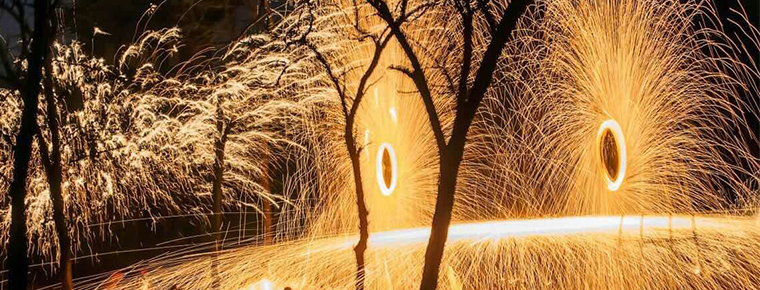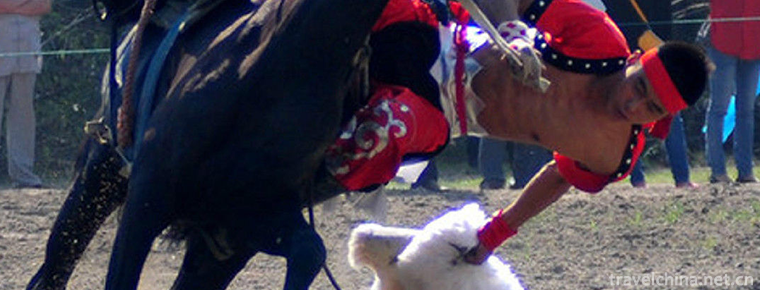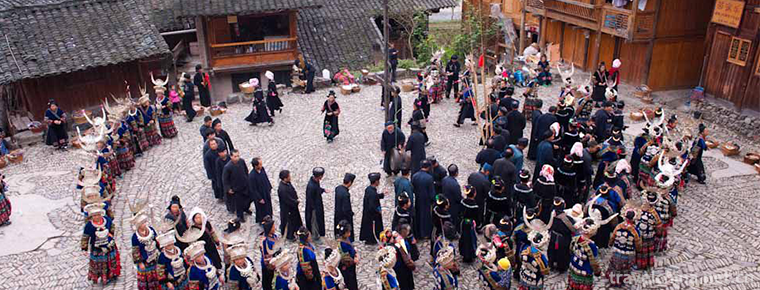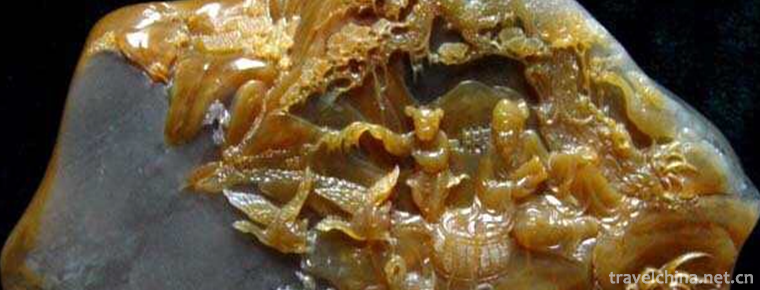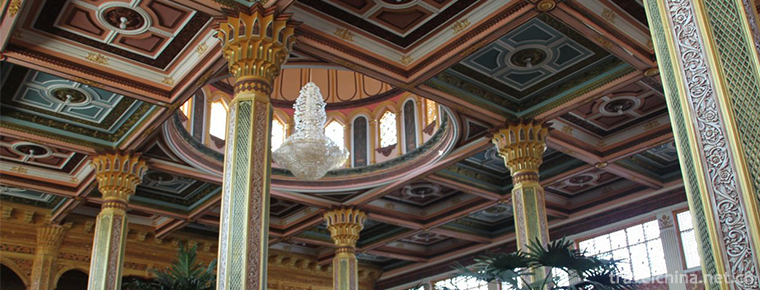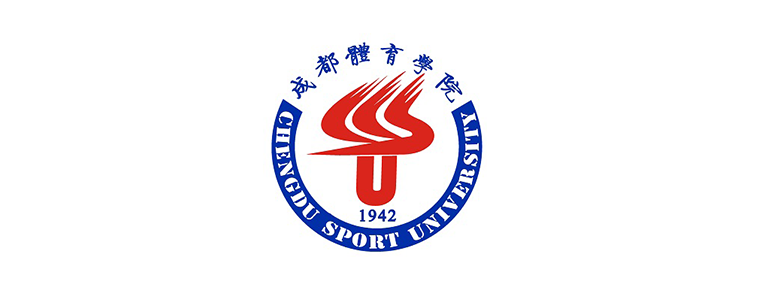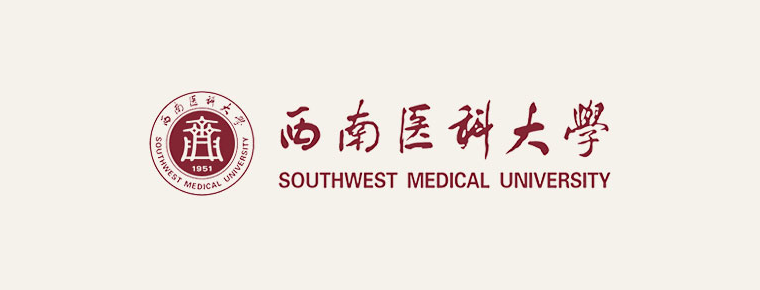Song and dance duet
Song and dance duet
Errentai is commonly known as Dual Items, two classes. Originated in Shanxi and growing up in Inner Mongolia, it is a traditional opera popular in the central and Western Inner Mongolia Autonomous Region and the northern areas of Shanxi, Shaanxi and Hebei provinces.
Because its repertoire mostly uses the form of one ugly once two people sing, so it is called Erren Tai. In the long-term development process, Errentai has gradually formed different artistic styles, with Huhhot in Inner Mongolia as the boundary, divided into East and west.
On May 20, 2006, Errentai was listed in the first batch of national intangible cultural heritage list with the approval of the State Council.
Development History
There are two opinions about the time and place of the formation of Errentai: one is that in the Qing Dynasty (1875-1908), it was in the Tumert Banner area of Western Inner Mongolia, and on the basis of the Mongolian and Han folk songs and the musical silk string sitting tone, it absorbed the traditional dance in the folk society fire, and created a performance form of singing and dancing once ugly, named "Mongolian Song"; the other is that it was named "Mongolian Song" by Xianfeng and Tongzhi Periods of the Qing Dynasty (1851-1874). ) Quyi meditation chamber is developed by combining dance movements such as kicking a leg in Yangko. Later, refugees fleeing from Shanxi spread to the west of Inner Mongolia, and absorbed Mongolian songs and grew up further. Errentai was originally just a form of masquerade performance for peasants to entertain themselves in their spare time. At the end of the Qing Dynasty and the beginning of the Republic of China, professional class societies began to emerge in Tumut, Inner Mongolia, with five to seven people in each class. The repertoire was gradually enriched and the performance was increasingly improved. It began to develop from performance singing to endorsement folk drama. During the War of Resistance Against Japanese Aggression, there were professional classes of Ertai on the East Road in Shangdu, Inner Mongolia and Zhangjiakou, Hebei Province, some of which had as many as a dozen members. Initially there is a line of business, in addition to the net, the end corner, but also developed other lines of business. The way of performance has broken through the form of "hat-wiping opera", with many people playing different roles on the same stage. At the same time, a small number of plays have also included martial arts. Music and singing are also innovative. In the past, most of them were dedicated to special songs. Later, according to the plot, with a variety of tunes. Some of the singing tunes develop to the slab style. Before the founding of the People's Republic of China, there were no actresses in the Eastern Road Errentai and the Western Road Errentai. As early as before the appearance of the professional class club, there were performances by Tummet on the same stage by Rong Shuangyang, an old banner artist, and his daughter-in-law, Ziyu, Mei, a daughter of Yue Stonemason, as well as Ding Xicai and his It was not until 1946 that Jizi Yucai became the first generation of professional female artists in Errentai by collecting female apprentices, Ban Yulian.
After the founding of the People's Republic of China, Errentai has developed vigorously. In Inner Mongolia Autonomous Region, Hequ, Yanggao and Datong of Shanxi Province, Zhangbei, Guyuan, Shangyi, Kangbao, Yulin and Fugu of Shaanxi Province, Errentai professional performing groups and Errentai Artistic School have been established successively. There are five professional theatre troupes in Western Inner Mongolia alone, with 26 Ulan Muqi troupes mainly performing Errentai mini-operas, and many amateur theatre troupes in other parts of the country.
Artistic characteristics
In the early stage, the performances of Er-ren-tai were relatively single. Once the characters were ugly, the costumes were simple, and the props were only handkerchiefs, folding fans and bully whips. Only flutes, four beards, Yangqin and four tiles (or bangs) are accompanied by musical instruments. Most of the songs sung are Wugeng, Four Seasons and December, such as "Red Cloud", "Ten Duanjin", "Ten Pairs of Flowers" and so on. The dancing figure is similar to that of Yangge. Most of them sing in the third person, with simple plot and few vivid characters.
After the Republic of China, with the outward spread of Erren's Opera, the artists carried out reforms and innovations in their performances, especially in drawing materials from folk songs and adapting them. For example, the original performance of "Walking to the West Pass" was performed in the form of a second-person duet, which was adapted into a first-person performance, adding plots and characters to it. With the rich content of the performance, its music, performance and costume have also been innovative. In the aspect of music singing, from the original monologue to the end, it has developed into a multi-track combination. There have also been simple board changes such as bright tune, adagio, flowing board, pinch board and so on. In terms of performance, according to the content of the repertoire, a "hot song" (also known as "whipping opera") with songs and dances, and a "hard code opera" with duet and workmanship have been formed. The dance programs of Errentai include "Big Round Field", "Big Half Moon", "Set Moon", "Wind Whirlwind Gate", "Inner and Outer Luocheng", "Drug Hulu", "Moving Gate", "Heaven and Earth Brand", "Big Cross", "Bee Pumping Melon" and so on. In addition, Danjiao also has a dance action called "flicker", that is, the right foot is different from the left leg, two arms draw an arc, body slightly sloping squat. Based on the dance steps of Yangko, it absorbs the figure of "sleeping fish" in Danjiao opera, which is rare in other operas. In the old days, there was a set of habits in the performance of two-person duet. Generally, the clown came on the stage and said "gutty mouth" (also known as "kilogram"), "gutty mouth" was a ready-made passage of the third person, which was freely chosen by the singer. Then through the way of question and answer (called "door to son"), Danjiao was called on stage to receive the main play. There are two types of acting in the main play. One is the performance of singing and dancing, commonly known as "hot music" or "whipping", such as "beating money" and so on, to win by Lyric singing and dancing. When dancing, folding fan two people together, overlord whip system clown special, sometimes dance double whip, divided into upper, middle and lower three sets, dancing like dragon pan pillar, up and down flies. Handkerchiefs are special for denier horns. In the early days of the founding of the People's Republic of China, Errentai once absorbed the traditional skills of handkerchiefs in Errenzhuan, changed handkerchiefs into octagonal ones, and developed into various "hands-on". No matter what kind of singing and dancing, it changes from slow to fast, forming a climax and stopping abruptly. Another kind of plot drama is mainly singing, commonly known as "hard code opera". Some of them take JUMP-in and jump-out performances, such as Walking West Pass, Downhill, Little Cattle, Swing and so on. This kind of performance is closer to life, but there are also some virtual and exaggerated actions. For example, Danjiao's temple touching, step-by-step, opening and closing the door; the appearance of the clown is equal. Lyrics, number boards, poems and "crosstalk" in Tao Bai all emphasize rhyming in the same way. Because they are completely in local dialects, they are different from those in Putonghua. It can be divided into twelve ruts: Middle East, Yiqi, Jiangyang, Ash Pile, Youqiu, Bossot, Chuanban, Pre-speech, Yao Tie, Fahua, Entry and Exit (Entry Voice) and Small Words (Little Person, Preface of Small Words). Language is easy to understand, vivid image, commonly used metaphorical techniques, the formation of tunes, singing, unique flavor. In terms of clothing, because the artists have a slightly better economic conditions, they have added some of the better-textured wardrobes. Although the art of Errentai has made great progress, as a drama, it still needs to be further improved to improve its artistic expression.

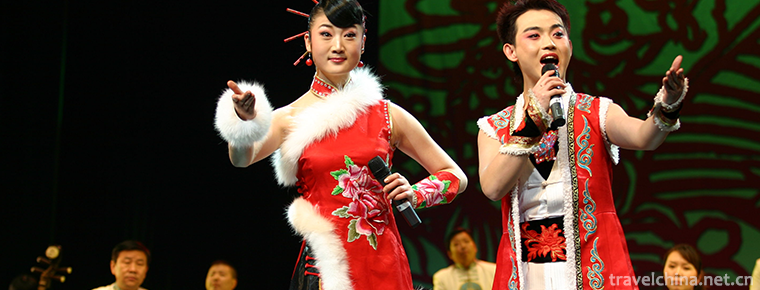
-
Shanghai Wild Animal Park
Shanghai Wild Animal Park , located at 178 Nanliu Highway, Pudong New Area, Shanghai, is the first National Wildlife Park in China built by the Shanghai Municipal People's Government and the State For.
Views: 165 Time 2018-12-05 -
Baxian Yaochi Party
Baxian Yaochi gathering is a traditional dish in Tai'an, Shandong Province, which belongs to the Shandong cuisine family. Egg white is the main material for Baxian Yaochi gathering..
Views: 129 Time 2019-03-27 -
Iron flower
Tiehua is a kind of fireworks which spread in the folk traditions of Henan and Jin Dynasties. It has a long history which can be traced back to the Spring and Autumn Period and the Warring States Peri.
Views: 217 Time 2019-04-23 -
Buzkashi
One of the folk sports events in Xinjiang, China. Although there is no written record of sheep on foot, it has been examined in some areas of northern Xinjiang, which has continued to this day, and is.
Views: 127 Time 2019-04-26 -
Diabolo
Diabolo is a splendid flower in Chinese traditional culture garden. Diabolo used to be called "Hu Dao", also known as "ground bell", "empty bell", "wind gourd"..
Views: 133 Time 2019-04-28 -
Miao Lusheng Dance
Lusheng dance, also known as "stepping on Lusheng" and "stepping on the singing hall", is named for its accompaniment and self-boasting dance. It spreads in the Miao, Dong, Buyi, S.
Views: 157 Time 2019-06-05 -
Shoushan stone carving
Shoushan Stone Carving is a traditional folk carving art. It is made of Shoushan Stone, which is produced in the northern mountain area of Fuzhou. It is a small carving for people to enjoy through spe.
Views: 112 Time 2019-06-15 -
Uygur Residential Architecture Skills Aiwan Sailai Residential Construction Skills
Uygur Aiwan Sailai dwellings are mainly distributed in towns and villages along the desert edge of the Tarim Basin, especially in Yutian, Moyu, Minfeng, Pishan, Hetian, Shache and Kashgar along the so.
Views: 291 Time 2019-06-26 -
Chengdu Sport University
Chengdu Institute of Physical Education is one of the six institutes directly under the former State General Administration of Sports. It is now a co-established Institute in Sichuan Province with the.
Views: 214 Time 2019-08-31 -
Southwest Medical University
Southwest Medical University is an ordinary university in Sichuan Province. It is located in Luzhou, a famous historical and cultural city and a civilized city in the region of Sichuan, Yunnan, Guizho.
Views: 122 Time 2019-08-31 -
Guangyuan natural resources
There are more than 4700 water conservancy projects in Guangyuan City, including 6 medium-sized reservoirs and 558 small reservoirs. There are 1.583 million mu of water area, 6.867 billion cubic meters of water resources and 1 billion cubic meters.
Views: 322 Time 2020-12-15 -
Meishan population
At the end of 2019, the total registered residence population was 3 million 422 thousand and 600, of which 1 million 194 thousand and 900 were urban population. At the end of the year, there were 2.995 million permanent residents, including 1.433 million urban.
Views: 334 Time 2020-12-18


